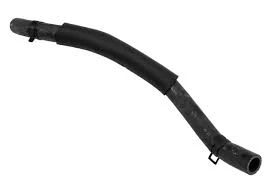rear tail shaft seal
Understanding the Rear Tail Shaft Seal Importance and Maintenance
The rear tail shaft seal is a crucial component in many vehicles, particularly those equipped with rear-wheel drive (RWD) and four-wheel drive (4WD) systems. This often-overlooked part plays a significant role in the overall performance and longevity of a vehicle's drivetrain. To understand its importance, we first need to delve into what a tail shaft seal is, its functionality, and the maintenance necessary to keep it in optimal condition.
What is the Rear Tail Shaft Seal?
The rear tail shaft seal is located at the rear of the transmission, where the tail shaft connects to the drive shaft or differential. Its primary function is to prevent fluid, typically transmission fluid or rear differential lubricant, from leaking out of the drivetrain assembly. This seal ensures that the internal components remain lubricated, thus facilitating smooth operation. Additionally, it helps to keep dirt and debris from entering the transmission and causing potential damage.
Why is the Rear Tail Shaft Seal Important?
1. Fluid Retention The most crucial function of the rear tail shaft seal is to retain the transmission fluid. If the seal fails, fluid can leak, leading to inadequate lubrication. This can result in overheating and eventual failure of the transmission system, which is complex and costly to repair.
2. Preventing Contamination Beyond just retaining fluid, the seal also acts as a barrier to contaminants. Dust, dirt, and moisture are detrimental to the internal components of the transmission. A properly functioning seal keeps these elements out, ensuring the longevity of the gearbox.
3. Cost-Effectiveness Repairing or replacing a failed transmission due to a leak from a faulty tail shaft seal can be prohibitively expensive. The cost of a seal itself is relatively low, but the repairs needed if it fails can run into thousands of dollars. Thus, maintaining the integrity of this seal is essential for cost-effectiveness.
Signs of a Failing Rear Tail Shaft Seal
Recognizing the symptoms of a failing rear tail shaft seal can save vehicle owners a lot of headaches. Here are some common signs to watch out for
- Fluid Leaks One of the most straightforward signs is the appearance of fluid puddles under the vehicle, particularly around the transmission area.
- Erratic Shifting If the transmission fluid levels drop too low due to a leak, drivers may experience difficulties with shifting gears or notice delayed engagement.
rear tail shaft seal

- Transmission Overheating Insufficient lubrication can lead to increased friction and heat within the transmission system, potentially causing overheating.
- Unusual Noises Grinding or whining sounds can indicate that the transmission is not operating correctly, which may be a direct result of low fluid levels.
Maintenance Tips for the Rear Tail Shaft Seal
Maintaining the rear tail shaft seal involves regular inspections and timely interventions. Here are some practical tips
1. Regular Fluid Checks Ensure that the transmission fluid is checked regularly. Low fluid levels can indicate a leak, requiring immediate attention to avoid further damage.
2. Watch for Leaks Periodically inspect the area around the tail shaft for signs of leaks. Catching a problem early can prevent significant damage.
3. Professional Inspections If you suspect an issue, it’s wise to consult a professional mechanic. They can perform a more thorough examination and replace the seal if necessary.
4. Scheduled Maintenance Follow the vehicle manufacturer’s recommended maintenance schedule for fluid changes and part inspections, which can extend the life of the tail shaft seal.
5. Driving Habits Adopting smoother driving habits can reduce strain on the drivetrain, thereby prolonging the lifespan of components including the tail shaft seal.
Conclusion
In summary, the rear tail shaft seal is a vital yet often disregarded component of a vehicle’s transmission system. Understanding its significance—ranging from fluid retention to contamination prevention—helps vehicle owners appreciate the need for regular maintenance and vigilance. By recognizing the signs of failure and maintaining the seal proactively, drivers can ensure their vehicles operate smoothly and avoid costly repairs. A little attention to this small component can go a long way in preserving the health of the entire drivetrain.
-
Simplifying Oil Changes: A Comprehensive Guide to Oil Drain Plugs and Their Variants
News Aug.04,2025
-
Mastering Oil Drain Maintenance: Solutions for Stripped, Worn, and Upgraded Oil Plugs
News Aug.04,2025
-
Fixing Oil Pan Plug Issues: Leaks, Stripped Nuts, and the Right Replacement Solutions
News Aug.04,2025
-
Everything You Need to Know About Oil Drain Plugs: Sizes, Fixes, and Upgrades
News Aug.04,2025
-
Choosing the Right Oil Drain Plug: A Guide to Sizes, Materials, and Drain Innovations
News Aug.04,2025
-
A Complete Guide to Automotive Drain Plugs: Types, Problems, and Innovative Solutions
News Aug.04,2025
-
The Ultimate Guide to Car Repair Kits: Tools and Essentials Every Driver Should Own
News Aug.01,2025
Products categories















